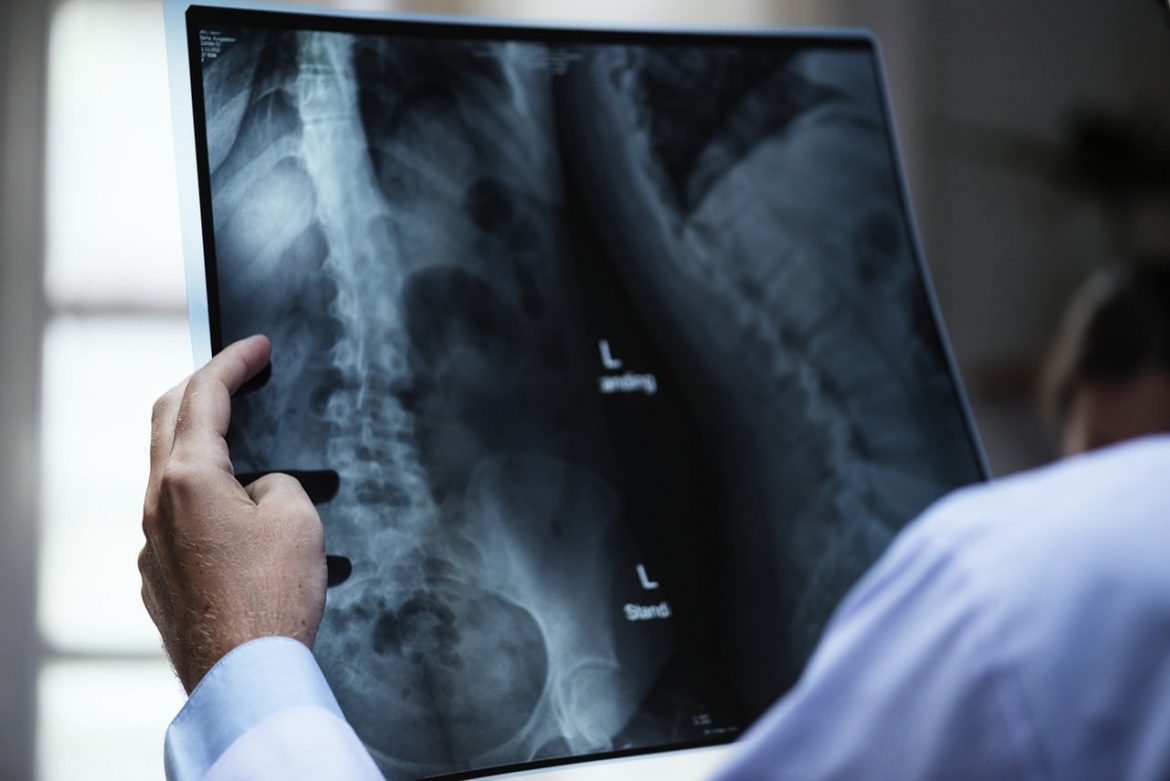In addition to following a diet that is made up of whole plant foods, it’s important to keep the glycemic load of your diet in mind. Using more beans, nuts, and seeds as major calorie sources, instead of grains and potatoes, reduces the overall glycemic load of the diet. As more and more research is conducted, we are learning that blood glucose levels are relevant to most chronic illnesses, not just diabetes.
Type 2 Diabetes Increases Fracture Risk
Evidence suggests that patients with type 2 diabetes are at greater risk of bone fractures.1 Among patients with type 2 diabetes, poorer glycemic control is associated with impaired bone turnover, meaning slower replacement of old bone tissue with new bone tissue.2,3 This suggests that elevated blood glucose could weaken bone.4
Hyperglycemia Harms Bones
Bone tissue constantly rebuilds itself. Bone-building cells called osteoblasts and bone-resorbing cells called osteoclasts work together to maintain bone mass and bone strength, striking a balance between building new bone and breaking down old bone.
Elevated blood glucose impairs the bone-building effects of osteoblasts. A study in healthy women found that a single bout of hyperglycemia resulted in measurable decreases in markers of osteoblast activity.5 This impaired bone building structurally compromises bone, leading to elevated fracture risk. For example, another study found that patients with inadequately controlled type 2 diabetes had higher fracture risk (compared to healthy people and those with adequately controlled type 2 diabetes) and altered bone architecture in the femur – thinning in the middle and thickening at the ends – which suggests susceptibility to fracture.6
In addition to compromising bone turnover, elevated blood glucose accelerates the production of advanced glycation end products (AGEs), which drive oxidative stress and damage collagen in bone tissue. Production of the bone-derived hormone osteocalcin is also diminished in T2D and in response to hyperglycemia. In addition to its bone-building activities, osteocalcin is involved in metabolism; a form of osteocalcin prompts insulin release and increases insulin sensitivity in muscle and fat tissue. Hyperglycemia also promotes calcium loss via the kidneys and reduces osteoblasts’ responsiveness to vitamin D.7
Nuts, Seeds, and Beans Can Help
In a vegan or near-vegan diet, when high-glycemic foods like potatoes, rice, and white flour products are used as the staple calorie sources, the glycemic load of the diet can get excessively high. Lower-glycemic calorie sources like beans, nuts, and seeds help shift the glycemic load of the diet lower, which, as mentioned earlier, affects many aspects of health, including bone health.
How almonds may promote bone health
Nuts may contain additional phytochemicals that promote bone turnover, according to an interesting study. Healthy volunteers consumed three different meals, each containing the same number of calories; the meals were made up primarily of almonds, potatoes, or rice. Cultured osteoclast precursor cells were then treated with serum from the volunteers. Serum taken after the almond meals reduced the number of osteoclasts formed and osteoclast-specific gene expression and reduced calcium release from bone cells. No effects of the potato or rice meals were detected. This suggests that phytochemicals derived from almonds help to keep the balance between osteoblast and osteoclast activity.8 This could be due to anti-inflammatory or antioxidant phytochemicals, as there is evidence that the anti-inflammatory effects of other polyphenols (such as plum polyphenols) help prevent bone loss, and oxidative stress is known to stimulate osteoclast activity, leading to bone loss.9
A vegan diet in itself is not enough. A focus on high-nutrient foods, including lots of green vegetables, beans, nuts, and seeds, keeps glucose and insulin favorable while providing nutrients crucial to bone health.
References:
- Oei L, Zillikens MC, Dehghan A, et al. High bone mineral density and fracture risk in type 2 diabetes as skeletal complications of inadequate glucose control: the Rotterdam Study. Diabetes Care 2013, 36:1619-1628.
- Rianon NJ, Smith SM, Lee M, et al. Glycemic Control and Bone Turnover in Older Mexican Americans with Type 2 Diabetes. J Osteoporos 2018, 2018:7153021.
- Kulkarni SV, Meenatchi S, Reeta R, et al. Association of Glycemic Status with Bone Turnover Markers in Type 2 Diabetes Mellitus. Int J Appl Basic Med Res 2017, 7:247-251.
- Sanches CP, Vianna AGD, Barreto FC: The impact of type 2 diabetes on bone metabolism. Diabetol Metab Syndr 2017, 9:85.
- Levinger I, Seeman E, Jerums G, et al. Glucose-loading reduces bone remodeling in women and osteoblast function in vitro. Physiol Rep 2016, 4.
- Oei L, Zillikens MC, Dehghan A, et al. High bone mineral density and fracture risk in type 2 diabetes as skeletal complications of inadequate glucose control: the Rotterdam Study. Diabetes Care 2013, 36:1619-1628.
- Sanches CP, Vianna AGD, Barreto FC: The impact of type 2 diabetes on bone metabolism. Diabetol Metab Syndr 2017, 9:85.
- Platt ID, Josse AR, Kendall CW, Jenkins DJ, El-Sohemy A: Postprandial effects of almond consumption on human osteoclast precursors – an ex vivo study. Metabolism 2011, 60:923-929.
- Arjmandi BH, Johnson SA, Pourafshar S, Navaei N, George KS, Hooshmand S, Chai SC, Akhavan NS: Bone-Protective Effects of Dried Plum in Postmenopausal Women: Efficacy and Possible Mechanisms. Nutrients 2017, 9.

